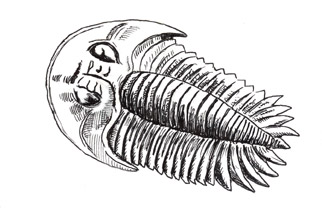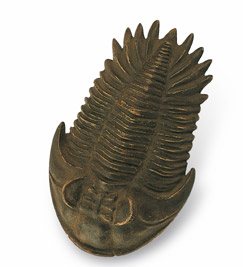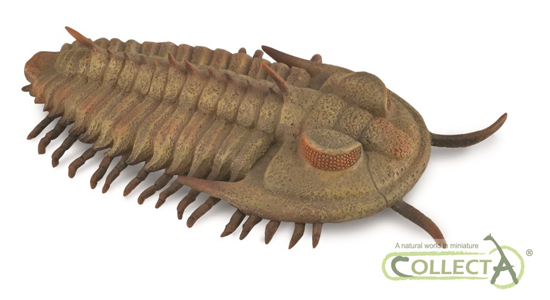Animals in Armour – The Successful Trilobite
The Trilobite – An Arthropod with a Tremendous Fossil Record
Insects are regarded as the most diverse of all the animal classes on planet Earth. To date something like 1,000,000 different species have been recognised and it has been estimated that there may actually be 30 million different species of insect around today. These numbers are truly astronomical, especially when some members of staff at Everything Dinosaur remember estimates for the total biodiversity for all animal species on this planet being put at around 2 million species as recently as the mid-1970s.
The Trilobite
However, the class Insecta makes up just part of a remarkable phylum – the Arthropoda, a phylum that can be traced back to the Cambrian and in all likelihood these animals and their ancestors made up a great portion of the life that existed during the Cryptozoic, that vast eon of time, otherwise known as the Precambrian when there was life on Earth but it has left few traces in the fossil record.
Arthropods have evolved to fill a vast array of environmental niches, with types of arthropod found in most habitats – in water and on land. Crustaceans, such as crabs, lobsters, barnacles and shrimps, along with all insects, scorpions, mites, spiders and millipedes are all members of this phylum. A number of extinct types of arthropod are represented in the fossil record. The most important extinct group are the Trilobita. These armoured animals evolved in the Early Cambrian and survived until the end of the Palaeozoic. As a class, Trilobita finally died out around 250 million years ago, at the end of the Permian period, when approximately 90% of all life forms became extinct.
Ten Orders of Trilobita
Ten orders of Trilobita are recognised at present, although the taxonomic classification and phylogeny of trilobites is frequently reviewed and debated. Despite the extensive fossil record of these animals, (their exoskeletons are partly comprised of calcite and this coupled with their marine existence gives them a high potential for preservation as fossils), there are still gaps in our knowledge regarding the evolutionary relationship between different orders.
An Illustration of a Typical Trilobite

Picture credit: Everything Dinosaur
Approximately, 20,000 species of trilobite are known, they are regarded as the standard bearer for the entire fossil record represented by Palaeozoic strata, although as a group the Trilobita were at their most diverse and abundant in the early Palaeozoic. All but one order of trilobites were extinct by the end of the Devonian, and by the end of Permian only two families of trilobite remained with a number of other families dying out in the mid Permian. Changes in climate, rising sea levels and the evolution of efficient predators such as sharks have all been put forward as theories to explain the demise of the trilobite.
A Replica of a Trilobite
CollectA offers a range of replicas of iconic fossil animals including a trilobite: CollectA Prehistoric Life Models and Figures.
They were certainly a remarkable and highly diverse group of animals and their importance in biostratigraphic processes as well as the assistance of their fossils in the relative dating of strata should not be underestimated.
We have recently introduced a model of a typical trilobite to our range. This makes an excellent addition for the serious model collector or for school/home study.
A Model of a Trilobite

Picture credit: Everything Dinosaur
To view the fossil replicas in stock at Everything Dinosaur as well as a huge range of prehistoric animal models and figures: Dinosaur Models and Prehistoric Animal Figures.


